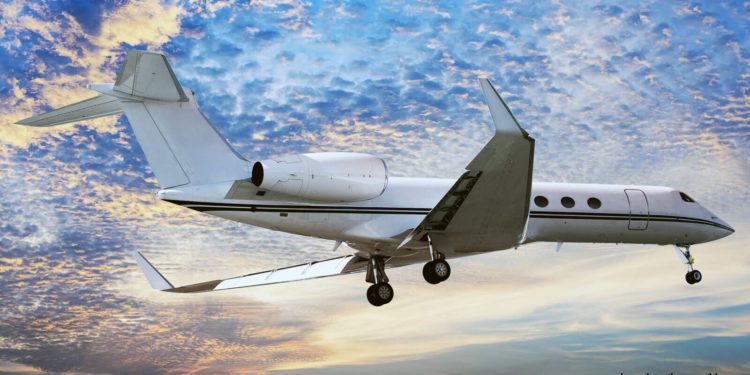International Standard Atmosphere: How It Affects Flight – Understanding the Basics

International Standard Atmosphere (ISA) is a model used for the standardization of aircraft instruments. It was established, with tables of values over a range of altitudes, to provide a common reference for temperature and pressure. Flying in ISA-plus temperatures will have a negative impact on aircraft performance. If ISA-plus temperatures are excessive, aircraft may not climb at the anticipated rate and/or may be unable to maintain altitude.
The following is an overview of basic information you need to know about ISA:
1. The ISA model has several components
ISA is a hypothetical model – representative of an ideal atmosphere based on the thermodynamic equation, as defined by the International Civil Aviation Organization, devoid of water vapor, wind, and turbulence. It uses a standard reference for pressure, density, viscosity, and temperature at different altitudes throughout the atmosphere. It consists of a table of values and indicates how these values change over a range of altitudes.
2. Standards of measurements
Temperatures on the ISA model are most often provided in Celsius but can also be stated in Fahrenheit or Kelvin – depending on user preference and preferred results. Likewise, heights and pressure are usually stated in meters, although measurements in feet or inches can also be provided.
3. Know the factors that impact ISA
ISA does not change by season or region of flight. It is only impacted when altitude decreases or increases. In the ISA model, the standard sea level pressure/temperature is 29.92 in. (1,013.25 mb) and 59°F (15°C). As atmospheric pressure decreases with height, the temperature will decrease at a standard lapse rate. Temperature deviation, the difference in temperature from ISA, can either be positive or negative. Standard ISA temperatures within the troposphere are 23.3°F (-4.8°C) at Flight Level (FL) 100, -12.3°F (-24.6°C) at FL200, and -49.9°F (-44.4°C) at FL300. At altitudes above FL360, temperature remains constant. Pressure on average will decrease by nearly half for each 18,000 feet of altitude. The ISA surface pressure is 29.92 in. Hg (1,013.25 mb) or 14.7 pounds per square inch, and at 18,000 feet it will decrease by half to about 14.94 in. Hg (500 mb) or 7.35 pounds per square inch. At 36,000 feet the pressure decreases to half again to about 6.71 in. Hg (225 mb) or about 3.30 pounds per square inch.
4. Understand “lapse rates”
Lapse rates are the rate of change in temperature with altitude, which can either be positive or negative. As far as ISA is concerned, the lapse rate will always decrease with height at a standard rate. The ISA model uses the standard temperature lapse rate. This lapse rate decreases at the rate of approximately 3.5°F or about 2°C per thousand feet – up to 36,000 feet. Above this point temperatures are considered constant to approximately 65,600 feet. Lapse rates will vary if moisture is added. The dry lapse rate is about 5.5°F per 1,000 feet, and the moist lapse rate ranges (dependent on the amount of moisture) 2-3°F per 1,000 feet. The ISA model uses the standard lapse rate, which falls between these two lapse rates.
The standard adiabatic lapse rate is where temperatures decrease at the following rates:
- 6.5°C per 1,000 m – or about 3.5°F (2°C) per 1,000 ft. – from sea level to 11,000 meters (approximately 36,000 ft.)
- From 11,000 meters (approximately 36,000 ft.) up to 20,000 meters (approximately 65,600 ft.), constant temperature is -56.5°C (-69.7°F), and this is also the lowest assumed temperature in respect to ISA.
5. Be aware of max ISA temperatures that cannot be exceeded
Each aircraft has different defined ISA performance specifications, and crews need to reference takeoff, cruise, and climbing performance charts for their particular aircraft. Be aware that aircraft may not perform exactly as listed in the manufacturer’s tables, and some sort of bias may need to be factored in.
6. Additional considerations
Remember that ISA models are theoretical. Due to inversions, as well as additions or decrease of moisture, the atmosphere will have different lapse rates. Flight crews should always review constant pressure charts along their routes of flight to determine how the atmosphere is actually performing. There are many ISA tables, on-line calculators, and technical papers available — either on the web or included in aircraft Original Equipment Manufacturer manuals.
Closing thoughts
ISA temperatures are important when computing flight plans. Best practice is always to review ISA temperatures en route and consider constant pressure analysis, in order to verify warm temperatures. Doing so will help crews avoid unanticipated operational issues in terms of reduced climb and/or altitude hold performance.
Questions?
If you have any questions about this article or another aviation weather topic, contact me at stevearbogast@univ-wea.com.




